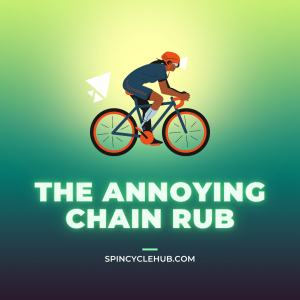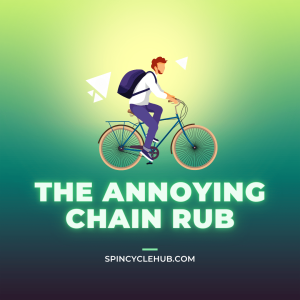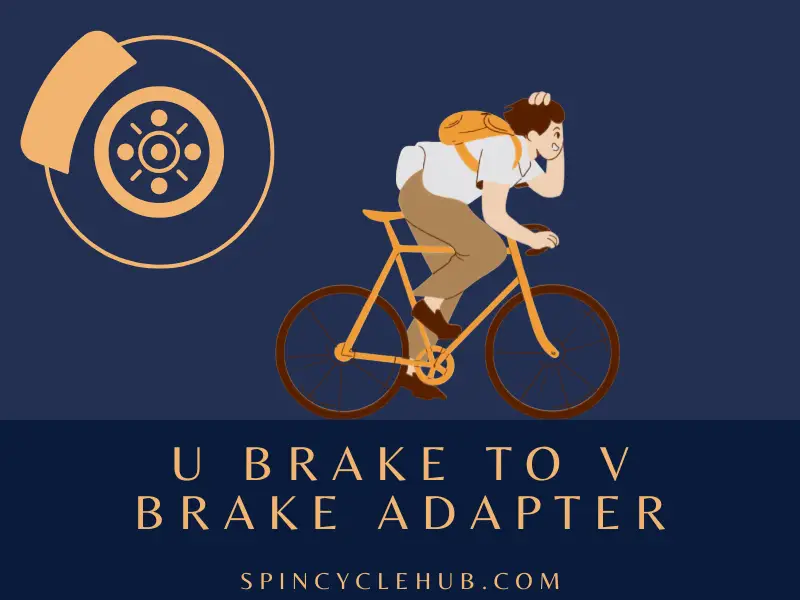Introduction
Have you ever experienced that irritating sound of your bike chain rubbing against the front derailleur? It can be quite frustrating, especially when it affects your ability to shift gears smoothly. But fear not, because in this guide, we’ll dive into the world of front derailleurs and learn how to tackle the dreaded chain rub issue head-on.
What is Chain Rub?
Before we delve into the specifics, let’s understand what chain rub actually is. Chain rub occurs when the bike chain comes into contact with the front derailleur while pedaling or shifting gears. This contact causes a screeching noise and can lead to poor shifting performance.

The Front Derailleur: A Key Player
The front derailleur plays a crucial role in your bike’s drivetrain system. It’s responsible for guiding the chain onto different chainrings, enabling you to shift gears and adjust the resistance. Understanding how the front derailleur works is essential in troubleshooting chain rub issues.
Understanding the Front Derailleur
Anatomy of a Front Derailleur
A front derailleur consists of several components working together to facilitate smooth gear changes. These include the outer cage, inner cage, derailleur body, and limit screws. Each part has a specific function that contributes to the overall performance of the front derailleur.
How the Front Derailleur Works
When you operate the shifters on your handlebars, the front derailleur moves, guiding the chain from one chainring to another. Proper adjustment and alignment of the front derailleur are critical for seamless gear changes and to avoid chain rub.
Identifying Chain Rub
Signs of Chain Rub
Detecting chain rub early on can save you from more significant issues down the road. Keep an eye out for these common signs:
Screeching Sounds: A Noisy Indication
If you hear a high-pitched screeching sound while pedaling or shifting gears, it’s likely caused by chain rub. The noise can be quite unpleasant and may occur in specific gear combinations.
Difficulty Shifting Gears: An Obvious Clue
When chain rub is present, you may experience difficulty shifting gears smoothly. The chain may hesitate, drop, or struggle to move onto the desired chainring.
Excessive Friction: The Feel of Chain Rub
Another indication of chain rub is increased resistance or a rough feeling while pedaling. You may sense a lack of smoothness, making your ride less enjoyable.
Resolving Chain Rub Issues
Basic Adjustments
In many cases, chain rub can be resolved through simple adjustments. Here are a few steps you can take:
Checking Cable Tension
Start by checking the cable tension connected to the front derailleur. Ensure it is neither too loose nor too tight. Fine-tuning the tension can alleviate chain rub issues.
Limit Screw Adjustments
The limit screws on the front derailleur control its movement range. Adjusting these screws can help prevent the chain from rubbing against the derailleur. Be cautious not to over-tighten them, as it may restrict shifting.
Proper Front Derailleur Alignment
Achieving the correct alignment of the front derailleur is crucial for smooth gear changes and avoiding chain rub. Here’s how you can achieve it:
Alignment for Smooth Shifting
Align the front derailleur so that it sits parallel to the chainrings. Use your eyes as a guide and make slight adjustments until it looks visually aligned.
Clearing Misalignment Issues
If the front derailleur is visibly misaligned, it may require more significant adjustments. Loosen the clamp bolt, align the derailleur properly, and then retighten the bolt securely.
Chainline Matters
Chainline refers to the alignment of the chain with the chainrings and cassette. A poor chainline can contribute to chain rub. Consider the following:
Chainring and Chain Compatibility
Ensure that the chainring and chain are compatible with each other. Mismatched components can lead to poor shifting and chain rub. Consult your bike’s specifications or a professional if unsure.
Chainline Adjustments
If you’ve ruled out other causes, adjusting the chainline may help alleviate chain rub. This typically involves repositioning the chainrings or adjusting the bottom bracket.
Preventing Chain Rub
Proper Gear Shifting Technique
Practicing good gear shifting habits can go a long way in preventing chain rub. Follow these tips:
Timing is Key
Shift gears smoothly and with intention. Avoid shifting while putting excessive pressure on the pedals, as this can increase the likelihood of chain rub.
Avoid Cross-Chaining
Cross-chaining refers to using extreme gear combinations, such as the big chainring with the largest rear cog or the small chainring with the smallest rear cog. This puts extra strain on the chain and front derailleur, leading to potential chain rub. Try to maintain a more suitable chainline.
Regular Maintenance
Keeping your bike’s drivetrain in good condition is vital for preventing chain rub. Make sure to:
Keeping the Drivetrain Clean
Regularly clean and degrease your chain, chainrings, and front derailleur. This removes dirt and grime that can contribute to chain rub.
Lubrication: The Silent Helper
Apply lubrication to your chain to minimize friction and ensure smooth movement. A well-lubricated chain reduces the chances of chain rub and prolongs the lifespan of your drivetrain components.

Conclusion
Don’t let chain rub dampen your cycling experience. By understanding the front derailleur, identifying chain rub signs, and implementing adjustments and preventive measures, you can keep your gears shifting smoothly and noise-free. Remember, regular maintenance and proper technique are key to avoiding chain rub and enjoying a hassle-free ride.
FAQs
How often should I check my front derailleur for chain rub?
It’s a good practice to check your front derailleur for chain rub every few weeks, especially if you notice any unusual noises or shifting difficulties.
Can I fix chain rub issues on my own, or should I seek professional help?
Minor chain rub issues can often be resolved with basic adjustments and proper alignment. However, if you’re unsure or encounter persistent problems, it’s wise to seek assistance from a professional bike mechanic.
Are there any quick fixes for chain rub in the middle of a ride?
While there are temporary solutions, such as avoiding the gear combination causing chain rub or making slight cable tension adjustments, it’s best to address the issue properly once you have access to the necessary tools and time.
Is chain rub more common on certain types of bicycles?
Chain rub can occur on various types of bicycles, but it may be more prevalent on bikes with multiple front chainrings, such as road bikes and mountain bikes.
Can chain rub cause damage to other components of the drivetrain?
Yes, prolonged chain rub can potentially damage the chain, front derailleur, and chainrings. Regular maintenance and timely resolution of chain rub issues can help prevent such damage.
- “How to Adjust Your Front Derailleur“ – This comprehensive guide provides step-by-step instructions on adjusting the front derailleur to eliminate chain rub and improve shifting performance.
- “Common Bike Problems and How to Fix Them“ – This article covers various common bike problems, including chain rub, and offers troubleshooting tips and solutions.
Watch this one,
Video Credits – Tony Marchand
DOWNLOAD THIS ARTICLE :Click Here
You May Also Like
-
Clicking from Bottom Bracket: Causes, Solutions, and Maintenance Tips
-
Hydraulic Disc Brakes No Pressure: Troubleshooting and Fixes



